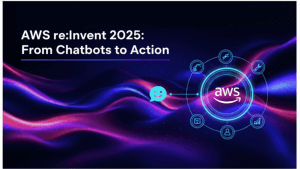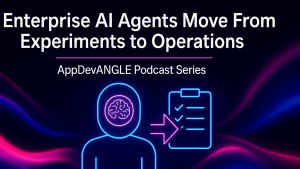MongoDB’s popularity with developers shows no signs of waning. This goes for both the NoSQL database itself and the company commercializing it, both of the same name. MongoDB, the database, is an open source document-oriented NoSQL database that enables developers to build and support scalable Web and mobile applications that draw on multi-structured data. MongoDB, the company, is a New York-based software vendor that sells software and support subscriptions to help enterprises run and manage MongoDB at scale in production.
The NoSQL database is the darling of application developers because of its aforementioned ability to handle data of varying structure and its ease-of-use. Developers can easily, for example, add or remove data fields and quickly build, test and iterate new applications with MongoDB. Speaking at MongoDB World this week, Mike Simone, head of data engineering at Citigroup, said a developer at the bank can spin up a three-node MongoDB cluster from his/her desk in less than 20 minutes and have a prototype app up and running in less than an hour. Such a process with traditional approaches would take days or weeks.
This popularity has resulted in over seven million downloads of the open source NoSQL database to date.
Despite its popularity with developers, however, MongoDB has proven less popular with enterprise operations teams used to supporting more traditional applications running against relational database management systems. Operations practitioners report difficulty running analytics and business intelligence-style reporting against data in MongoDB and maintaining consistent performance at scale. Security is also a concern. These operational knocks could inhibit MongoDB’s growth in mainstream enterprises, particularly those in regulated industries.
Making MongoDB Enterprise-Grade
But MongoDB, the company, is turning these weakness into strength for its business by developing management, monitoring and security software and services to enable ops teams to run MongoDB at scale to support mission-critical applications. It is also turning to partnerships to fill in some of these functional gaps and to smooth MongoDB’s entrance into existing enterprise infrastructure.
MongoDB Management Service (MMS) is the monitoring and management application suite developed by MongoDB for operational professionals. MMS was initially only available via cloud subscription, but MongoDB introduced an on-premise version early this year. As part of its most recent upgrade, MongoDB 2.6, the company also made a number of important enhancements to MMS to appeal to operations professionals. They include the introduction of a query planner, improved reporting and visualization functionality, point-in-time recovery capabilities and incremental, continuous backup.
MongoDB also continues to work with the MongoDB community to improve the core database itself with a focus on enterprise-grade capabilities. For example, in the latest upgrade MongoDB changed the way writes are made to the system in bulk operations to improve performance. The company also works with its cloud partners to optimize performance on their infrastructure. MongoDB is working with AWS, for instance, to better configure MongoDB on EC2 to improve disk throughput.
MongoDB has also been busy on the partnership front. To provide better analytics and BI capabilities, the company recently announced technology partnerships with Hadoop vendor Cloudera, data warehouse incumbent Teradata and data integration/BI provider Pentaho, among others. MongoDB also works closely with IBM, despite IBM’s acquisition of NoSQL rival Cloudant. MongoDB and IBM partnered last year to enable DB2 applications to draw on data in MongoDB, and the two are working together to integrate MongoDB security and monitoring capabilities, such as user-defined roles and field-level security, with IBM Guardium.
Short and Long-term Challenges
MongoDB currently has more than 1,000 paying customers, up more than 100% in the last two years. Customers include marquee names such as Citigroup, Verizon and Bosch. Based on Wikibon’s analysis, the company recorded $62 million in revenue in 2013, up from $37 million in 2012. It has amassed $230 million in funding to date, though Chairman Dwight Merriman recently told SVBJ profitability is at least a couple of years out.
The next 12-to-18 months are important for MongoDB. It must capitalize on its early success with developers to expand small deployments to larger departmental and eventually enterprise-wide deployments. Feedback from early customers indicates improving enterprise-grade features, as highlighted above, is one key. Citigroup’s Simone identified MongoDB’s business intelligence capabilities as one area that needs improvement and said the “application layer has more work to do.”
Another important element is simply reaching a wider user base. As such, MongoDB this week announced partnerships with Microsoft Azure and Google Compute Engine to offer MongoDB and MMS on their respective cloud platforms. MongoDB also prices its subscriptions extremely aggressively, with its basic subscription starting at $2,500 per user. MongoDB Max Schireson believes aggressive pricing is critical to the company’s early growth and that it will make up in volume what it leaves on the table in per unit pricing.
As with any hot market, MongoDB has no shortage of NoSQL competitors. Among them is Aerospike, which offers a flash-optimized NoSQL database for real-time operational workloads. Just this week, Aerospike announced a $20 million funding round and open sourced its eponymous database to spur adoption. Another competitor is Couchbase, which announced its own $60 million round of funding this week, bringing its total funding to $110 million. Then, of course, there’s Oracle, which has more to lose than any other incumbent database vendor from the NoSQL threat. Oracle offers its own NoSQL database but faces challenges incentivizing its field to sell NoSQL over the more lucrative Exadata.
Long-term, a challenge for MongoDB is continuing to cultivate the open source community, critical to its early success, while reining in its aggressive pricing. Speaking at MongoDB World, CEO Schireson acknowledged that the value its customers get from MongoDB is disproportionate to the price they pay the company for its software and services. That is a smart strategy while in growth phase, but pressure from investors to increase pricing will likely mount as MongoDB, the company, matures and eyes a potential IPO.
Action Item: Operations professionals tasked with supporting MongoDB deployments should take the time to learn about the latest enterprise-grade features introduced in MongoDB 2.6. Also, push MongoDB on its long-term plans vis-a-vis those features most important to maintaining performance at scale and improving security and analytics/reporting.


